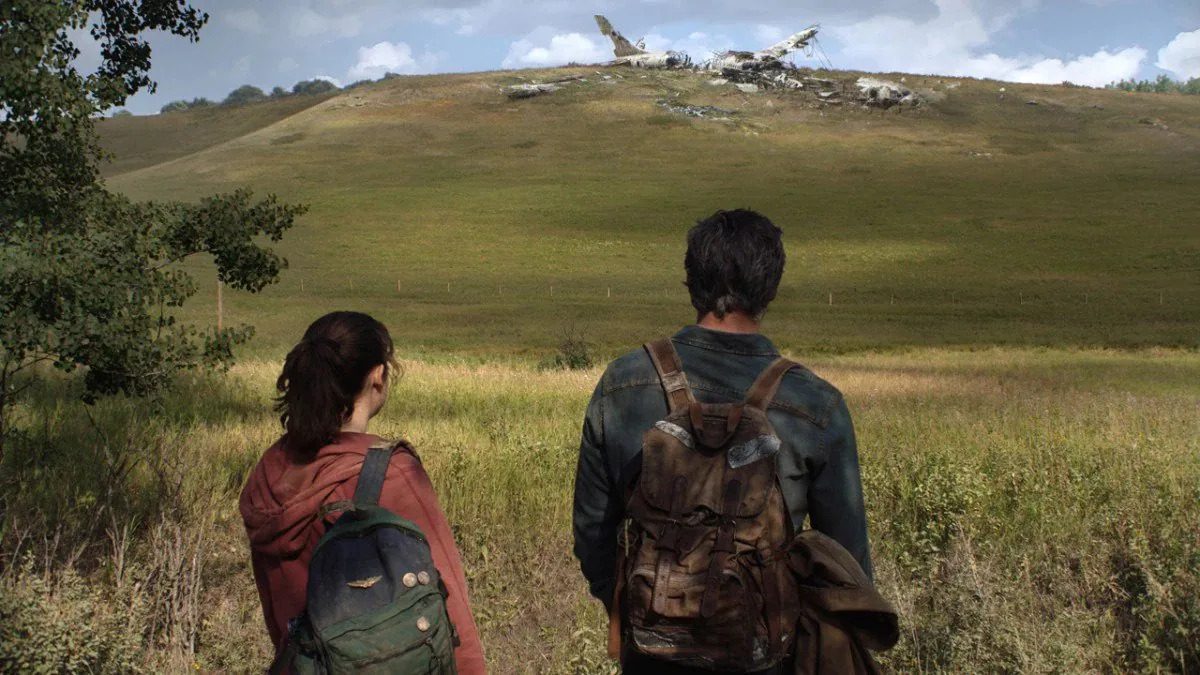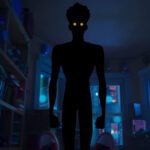REVIEW: The Last of Us – Season 1, Episode 1, “When You’re Lost in the Dark”
HBO’s The Last of Us is not the worst thing to come out of Hollywood in recent years in terms of adaptation or writing quality, especially considering its competition is atrocities such as The Rings of Power and The Witcher: Blood Origin. Despite this, the first episode of The Last of Us, “When You’re Lost in the Dark,” is not good by any stretch of the imagination. It is not offensively bad or an assault on the senses, but it is still incredibly underwhelming in terms of its writing and acting prowess. This first episode does borrow quite a bit from the game, and those moments have a glimmer of quality about them that is, more often than not, ruined by the poor and flat performances of the entirely subpar main and supporting cast.
*SPOILERS FOR THE SHOW AND THE GAME*
“When You’re Lost in the Dark” does follow the most basic plot outline from the beginning of the video game. Sarah gives Joel a watch that he later uses to remember her. The zombie apocalypse descends, and the family rushes out to their truck to escape the city, only to be caught up in the ravages of a zombie horde before Sarah is ultimately killed by a soldier under orders. Twenty years later, Joel works with Tess to get gear that is rightfully theirs from Robert, only to find that the gear is worthless. Marlene, the leader of the Fireflies, takes advantage of their vulnerability in this moment to barter their smuggling skills to get Ellie out of the city. While this is the very, very basic plot of the beginning of the game, “When You’re Lost in the Dark” makes some baffling changes that damage several characters. These changes facilitate the bloating of the runtime to astronomical levels, dragging it out with worthless, humdrum scenes to such a degree that boredom quickly sets in.
By far, the best scene in “When You’re Lost in the Dark” is one taken nearly shot-for-shot and word-for-word from the game. When the zombie apocalypse first begins, and the main characters are in a truck riding through the carnage, an audience member would be forgiven for forgetting the drudge that had preceded that scene. This truck sequence has virtually no dialogue, and that’s its saving grace. This show is almost good when the actors aren’t at the forefront, allowing the environmental storytelling from outside the windows and the claustrophobic nature of Sarah’s perspective to tell a more complete and riveting story than these actors are remotely capable of telling.
With the exception of the acting, the biggest sin of “When You’re Lost in the Dark” is the aforementioned bloat. Scenes are dragged out long past their welcome, providing no additional information besides images of the characters slowly walking or standing for far longer than is needed. The worst example comes at the very beginning of the episode. The first 20 or so minutes center around Sarah’s daily routine, attempting to garner additional sympathy from the audience before her untimely death. This opening does not achieve this desired result, as it does nothing for her character. In 30 seconds, the video game was able to perfectly display Sarah’s personality, her priorities, and her relationship with Joel to such a degree that her death was a shocking and biting moment of drama. In the show, the blank-faced Sarah stumbles her way from scene to scene, delivering empty lines that seem more derived from boredom than talent.
The game did in 30 seconds what the TV show could not accomplish in 20 minutes. “When You’re Lost in the Dark” could have cut that prologue and gone directly to the couch scene where Sarah gives Joel his repaired watch without the episode losing any of its narrative or emotional weight or attempted import. There are several other more minor examples of unnecessary bloat, but this is the chief offender. With such pointless scenes exemplifying the episode, defined by poor and vapid acting, it’s a struggle and a drudge to endure the astronomical runtime.

Similar to Sarah’s flat-faced and expressionless acting, the rest of the cast appears stubbornly incapable of expressing themselves even remotely. Vacant stares exemplify the majority of the acting in “When You’re Lost in the Dark.” Even Pedro Pascal’s Joel seems to tiredly wander from moment to moment, doggedly fleeing the basic precepts of a good performance. This, combined with how pathetic and incompetent they wrote Joel – as confirmed by the creators – makes Joel an underwhelming protagonist. If he’s not competent or allowed to excel at the task he undertakes, coincidences and contrivances or constant rescuing are the only ways that he can endure violent and dangerous encounters. That is the case with “When You’re Lost in the Dark.” Because Joel is no longer competent, the writers had to change him into a drug dealer selling to soldiers to facilitate a long enough delay at the end for Ellie to spring the trap on the guard to whom Joel dealt. The near-impossible coincidences required to get that one guard the audience saw getting drugs from Joel into position to find the protagonists fleeing the city, holding his fire long enough to make a decision and enabling their survival, is cheap and lazy writing at its finest. Pedro Pascal’s Joel resembles the Joel from the video games in nearly no way whatsoever besides his costume, and he is not replaced by a character of commiserate or superior quality.
Every other character is changed similarly to Joel and performed by seemingly incompetent actors. All three of the prominent female characters are given the same foul-mouthed, bitchy personality, making them incredibly unlikable. Yes, Ellie was foul-mouthed and yelled quite a bit in the video games, but her default repose was one of vulnerability and timidness, inspiring Joel’s paternal instinct to protect her. If Ellie is just “angry sweary girl,” she will not achieve even a fraction of the belovedness that Ellie in the game did. Bella Ramsey seems incapable of playing the sweet little girl that made The Last of Us so great.

Tess and Marlene both fall into the same pitfalls, neither resembling their game counterparts, and both just come off as bitchy and with severe superiority complexes. For some reason, Tess is in charge rather than Joel’s partner, and she just scowls her way through the entire episode. One decision, in particular, comes across as mystifying: during her capture, she promises Robert not to tell Joel the truth about the origin of her injuries, attempting to barter for her freedom. Then, an incredibly fortuitous Firefly attack facilitates her freedom, meaning there is no need for her to lie to Joel. However, once Joel and Tess are reunited, she immediately tells the fabricated lie she told Robert she would spin. This decision is baffling enough before she immediately undoes the lie and reveals the truth with zero reaction to the lie coming from Joel. It’s as if the writers couldn’t decide between the truth and the lie, so they decided to do both without taking into account Tess’s personality or the framework of the scene. This utter incompetence only leads to the further padding of the overstuffed runtime.
While Tess’s personality change doesn’t affect much of the narrative, Marlene’s character change does. Marlene’s likability in the video game is essential to the story. Her kind and warm performance is meant to garner trust from the audience and make them question whether or not she may be justified in her decisions, especially by the end of the game. Her likability is also essential in gaining Ellie’s trust, so when she says, “Trust Joel and Tess,” Ellie gives them a chance. However, because Marlene is an incredibly unlikable person, there is no logical nor emotionally relevant reason for Ellie to trust Marlene or, by extension, Joel and Tess. The Fireflies’ cause is no longer questionable to the audience because Marlene’s personality is essential in causing that questionability. When her death comes for this Marlene, the audience will have little trouble agreeing with Joel’s decision to kill her, robbing them of the emotional weight of that finale.

The technical side of “When You’re Lost in the Dark” is the solitary aspect that can be praised wholeheartedly. The cinematography and CGI are beautiful, expertly moving from claustrophobic semi-POV shots to broad and stunning landscape shots. The set and production design are immaculate, perfectly recreating some of the best locations from the video game. The zombie prosthetics and special effects are beautiful, immaculately adapting the look from the games. While the music is relatively forgettable, it accomplishes everything it needs to inspire the correct emotion from the audience. Even the costuming and makeup departments are on point throughout the episode. There is almost zero to criticize on the technical side of this production. The biggest pitfalls of “When You’re Lost in the Dark” reside solely with the acting and the writing.
The only exception to this technical brilliance comes by way of a creative decision rather than a technical one. In application, the announced departure from the spores to tendrils is far worse than initial speculation supposed. The design and execution of the tendrils are stunningly stupid, destroying immersion entirely. Seeing an assortment of spaghetti-like tendrils creeping out of the mouths of zombies is laughable at best, ruining the otherwise great creature makeup. This change from the games hurts The Last of Us entirely.
Overall, The Last of Us does have better adaptation integrity than many of its recent counterparts, with attempts being made to recreate scenes from the video game. It respects the source material more than most of Hollywood seems capable of on its best days. However, the disrespect and butchering of the characters, which were the heart and soul of the games, ultimately make “When You’re Lost in the Dark” a bad adaptation. The occasional visual and line are not enough because of the poor acting and the changes it makes from the source material. For example, the watch gifting scene is nearly entirely recreated, but the acting and previous empty character development result in a bad scene. Even with everything in the show’s favor, it stumbles and falls in spectacular fashion.

The biggest narrative changes from the game are the decision to make Sarah’s birthday present the repair of Joel’s watch rather than the pure gifting of a new one, Joel’s desire to find Tommy, and a plane crash rather than a car crash facilitating the departure from the truck during the initial apocalypse. While the plane crash doesn’t affect much narratively, it comes across as a weird decision that is statistically so unlikely that it eradicates momentary immersion. Joel’s desire to find Tommy damages more from an emotional standpoint than from a plot standpoint. The bad blood between the brothers facilitates a tremendous and cathartic reunion later in the story. If there has been no falling out and no years of separation with no contact, their reunion will be far less impactful.
Additionally, the fact that Joel already wants to leave Boston makes his decision to smuggle Ellie less meaningful. It’s such an easy decision that Tess barely has to try and convince Joel to undertake the smuggling. It’s no longer a hard choice that Joel momentarily wrestles with, making his effect on the plot clear and defined. Now, Tess just goes, “Hey, we’re doing this,” and Joel shrugs and agrees. Taking away the violence preceding this decision and how questionable it is makes Joel a passive participator in this plot. Lastly, the decision to make Sarah’s gift merely the repair of Joel’s old watch is an overall minor one, but it does take something away from its later importance. The watch is not wholly tied to Sarah. It may have been a gift from somebody else with countless memories before that final birthday present. It is far less meaningful and special, especially considering that Sarah stole the money from Joel to repair it. Comparatively, there should be very little emotional connection to that item now.

As always with a modern Hollywood product, the question must be asked if the show is woke or political in an undue fashion. With the exception of the occasional woke aside, such as a COVID reference and the revelation that the fungus’s evolution to infect humans was facilitated by global warming, “When You’re Lost in the Dark” is not particularly woke at all. It may be a poorly written and poorly executed episode, but it is not woke, so that is in its favor.
“When You’re Lost in the Dark” is far from the worst thing to grace television in recent years. Normies and audience members who don’t pay attention too much might find some enjoyment in it, and those who do not know the game very well may believe that it is a good adaptation. If it weren’t for the poor performances, the bloat, the character assassinations, and the shallow dialogue, “When You’re Lost in the Dark” could almost be OK. As it stands, there is more wrong with this episode than there is good about it, resulting in a less than mediocre end product that offers little to entice further viewing.
The Last of Us – Season 1 Episode 1, “When You’re Lost in the Dark”
Plot - 4.5
Acting - 2
Progression - 2
Production Design - 9
Adaptation - 5
4.5
Bad
If it weren’t for the poor performances, the bloat, and the shallow dialogue, “When You’re Lost in the Dark” could almost be called OK. As it stands, there is more wrong with this episode than there is good about it, resulting in a less than mediocre end product that offers little to entice further viewing.








